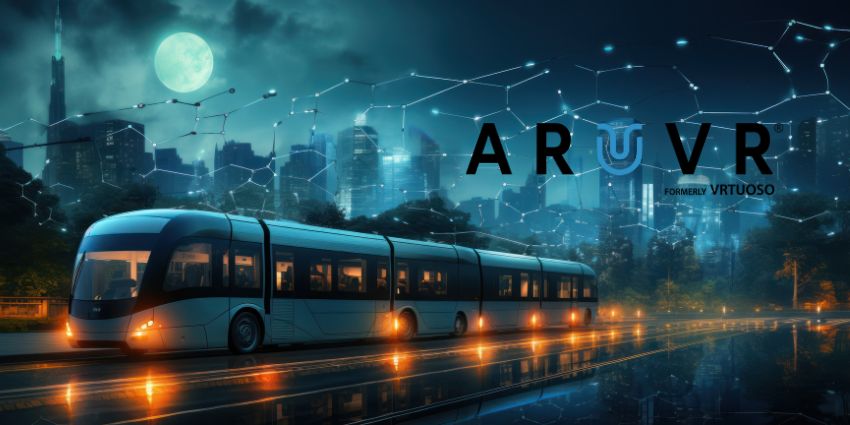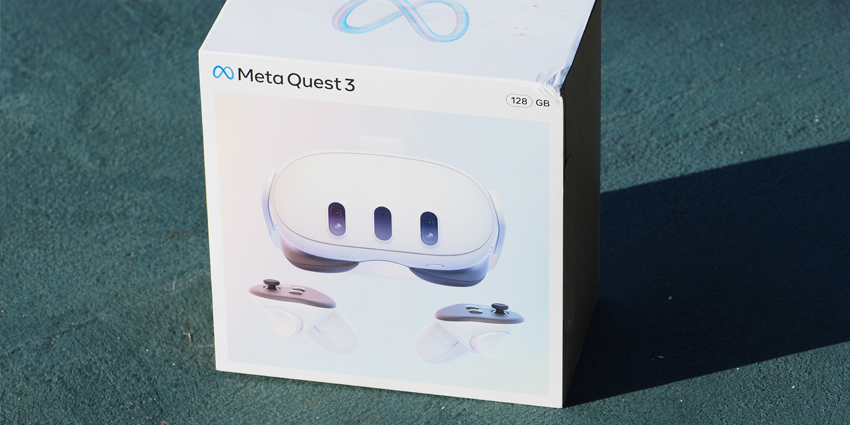Spatial computing is here, and it’s changing the world
Millions, even billions of people worldwide, interact with spatial systems and tools daily. The GPS in a car, a virtual home assistant with speech recognition capabilities, and QR code scanners are all examples of spatial technology.
However, despite this, many of us have yet to learn what spatial computing is or how it works. Even as the landscape continues to grow, with the advent of digital twins, the metaverse, IoT, and XR, confusion abounds for many consumers.
So, what is spatial computing, what are its applications in the modern world, and how is it being implemented to shape the digital space of tomorrow?
What is Spatial Computing? A Simple Spatial Computing Definition
Spatial computing is an umbrella term for solutions that allow us to interact with computers on a new level. The concept takes us beyond the clunky desktops and tech manifestations of Web 1.0 and 2.0 and into the new world of Web 3.0.
With spatial computing, companies aim to make computers essentially invisible. Rather than interacting with computing systems as outside parties, we step into a world where we can immerse ourselves in intuitive user interfaces. Instead of using keyboards and buttons to control processes, we use gestures, eye movement, and voice commands detected by sensors.
Without spatial technology, a virtual reality environment would be something you could see and walk around, but never touch or interact with. You could see a virtual book on a table, but reaching out wouldn’t let you flip through the pages. You’d have to use a separate mouse or controller instead.
Developers are turning computers into part of our everyday world through the spatial computing revolution, allowing us to interact with tech naturally.
Is Spatial Computing just VR?
AR, VR, MR, and the broader XR landscape are closely connected with spatial computing. Developers and designers can use spatial tools to create immersive user experiences in these settings. Think of how headset trackers and cameras allow you to interact with digital content without controllers.
However, spatial computing isn’t just a concept in the XR space. Instead, it’s a toolkit that connects the dots between ideas like the metaverse, digital twins, and user experience.
When was Spatial Computing Invented?
Interest in spatial systems is increasing rapidly right now. Innovations in the industrial metaverse and the XR headset space are driving new attention to the space. Tech giant Apple has even helped to generate new demand for spatial technology with its new Vision Pro headset. The MR device and its operating system are defined as “spatial computing” solutions.
However, spatial computing isn’t a new concept. It was introduced initially by Simon Greenwold in 2003. Greenwold defined spatial computing as human interactions with machines that manipulate experiences in real life.
Initially, some of the first examples of spatial computing were relatively simple. GPS uses spatial tools like sensors to provide navigation support and direction. Apps like Snapchat even use this technology to allow users to filter images and videos.
Today, however, the world of spatial technology is growing more advanced. Thanks to the rise of new protocols for Web 3.0 (the spatial web), XR innovations, and the metaverse, spatial computing is everywhere.
How Does Spatial Computing Work?
In simple terms, spatial computing leverages technology to merge computing into our everyday world. Spatial systems utilize various tools to influence human and computer system interactions.
In the construction world, for instance, the Internet of Things (IoT), sensors, and photogrammetry provide computers with information on a specific product, environment, or process.
AI-driven algorithms process this information and make sense of the imagery captured by lidar, radar, and scanners. These tools allow computer systems to create a 3D model of the world they can use to understand the connections between objects and environments.
Using this information, spatial systems can provide users access to data they can leverage to address issues and repair problems. Some spatial computing systems even utilize automation, allowing fixes to be applied to systems without human input.
In the XR world, spatial computing systems leverage the information collected from sensors and other tools to respond to human instruction. For instance, headsets like the new Apple Vision Pro allow users to interact more effectively using eye-tracking sensors with a scalable content interface. The spatial technology built into the headset enables the tech to respond to natural human actions, like hand gestures or voice commands.
Spatial systems align computer programming with how humans interact with the world. It opens the door to new physical workflows, more valuable data insights, and opportunities for advanced automation.
Spatial Computing Companies: Who’s Investing in Spatial Tech?
As we move into a new era of computing, defined by Web 3.0 and the metaverse, the demand for immersive innovations has increased. The market is expected to expand to a value of $620.2 billion by 2032 at a CAGR of 18.3%. This growing landscape has paved the way for countless new spatial computing companies to enter the market.
However, there are also many well-known names in the technology industry with a strong presence in the spatial space already. For instance:
- Microsoft: A pioneer in metaverse spatial computing and XR technologies, Microsoft is one of the market leaders aligning the XR and spatial technology spaces. The company’s HoloLens headsets, Microsoft Mesh, and other emerging tools provide companies with various ways to explore the benefits of immersive interactions.
- Apple: As mentioned above, Apple is currently making waves in the spatial tech space. Its highly anticipated MR headset has been described as a “spatial computing system” by the brand. Additionally, Apple has introduced the world’s first spatial operating system, visionOS.
- Google: Google and its parent company, Alphabet, are highly invested in spatial computing. The organization’s background in AI, machine learning, and cloud computing are all building blocks for spatial computing. Google has even invested heavily in the XR spatial elements in the past.
- Meta: Perhaps the best known pioneer of metaverse spatial experiences, Meta has made considerable strides in the industry. As well as developing metaverse environments like Horizon workplace, Meta has produced both VR and MR headsets with spatial technology.
- Amazon: Amazon is also highly invested in spatial systems. The AWS service offers a variety of solutions for immersive computing, simulation, and XR. Amazon also utilizes spatial tools for drone deliveries powered by AI and IoT.
How Spatial Computing Will Change the World
Spatial solutions have already had a huge impact on the world we live in. However, there’s still scope for the use of this technology to grow.
Innovators are now exploring opportunities to expand the potential of spatial computing technology for:
- Employee training: Spatial technology allows for immersive, engaging training experiences and simulations. It enables employees to interact with scenarios in new, intuitive ways. Extended reality applications even allow team members to train in virtual settings safely, from anywhere.
- Product development: 3D visualization, one of the most valuable initial breakthroughs for spatial computing, continues to empower product development today. With spatial computing, companies can create digital twins of products and experiment with new designs without limitations.
- Healthcare: Spatial computing has various applications in the healthcare sector. Systems like ProjectDR from the University of Alberta allow users to display CT scans and MRI data on a patient’s body using spatial solutions. Technology like this could transform the surgical world as we know it.
- Customer service: The CX landscape also benefits from spatial computing. Sensors can collect information about customers to allow for the creation of more personalized experiences. XR environments allow employees to onboard, train, and support customers in a virtual environment, boosting customer success.
- Collaboration: Immersive collaboration is trending in the new age of work. As employees become more geographically dispersed, spatial systems can improve remote collaboration. It allows employees to share a unified digital space, share assets more effectively, and connect with employees in an engaging format.
Spatial technologies are also driving incredible productivity and creativity throughout virtually every industry. Even automotive companies like Ford have used spatial systems to help design teams create more inclusive, safe vehicles. Spatial technologies will pave the way to smarter cities, communities, and environments in the years ahead.
The Future of Spatial Technology
Spatial computing isn’t a new concept in the tech world. Innovators have been looking for ways to change how we connect with computer systems for years. However, the growth of digital transformation in the last few years has cultivated the industry’s growth.
As 5G technology and networking solutions evolve, XR systems become more advanced, and artificial intelligence grows smarter, spatial technologies will continue to grow. This multi-faceted concept will soon become a more fundamental part of our world.
As we enter the era of the metaverse and explore new digital experiences, spatial computing will form the foundations of a new relationship between people and machines.







